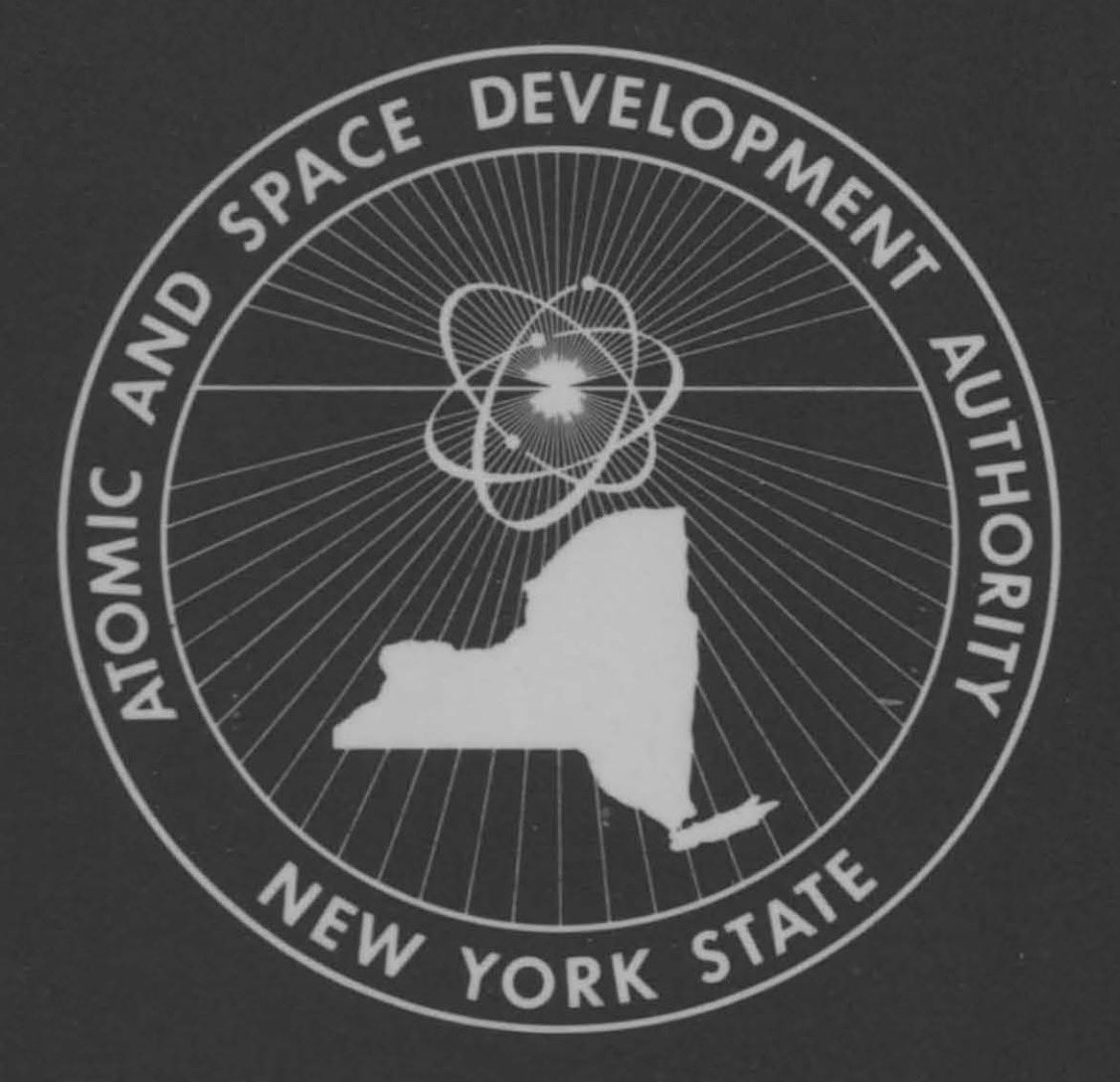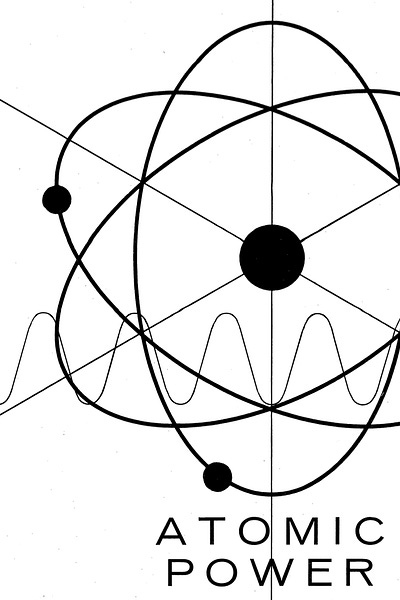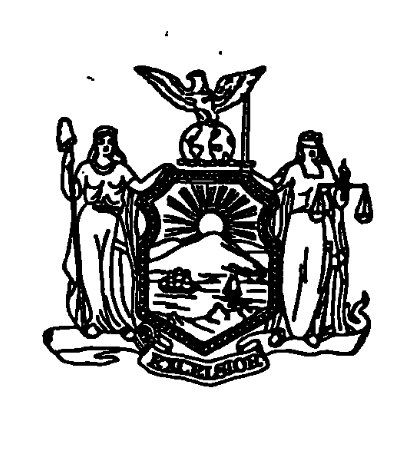Kathy Hochul's Atomic Abundance, and research notes
In a recent article for Jacobin, I tell the "Abundance" story of New York's exciting plans for new nuclear power development to be led by the New York Power Authority. This is a big deal.
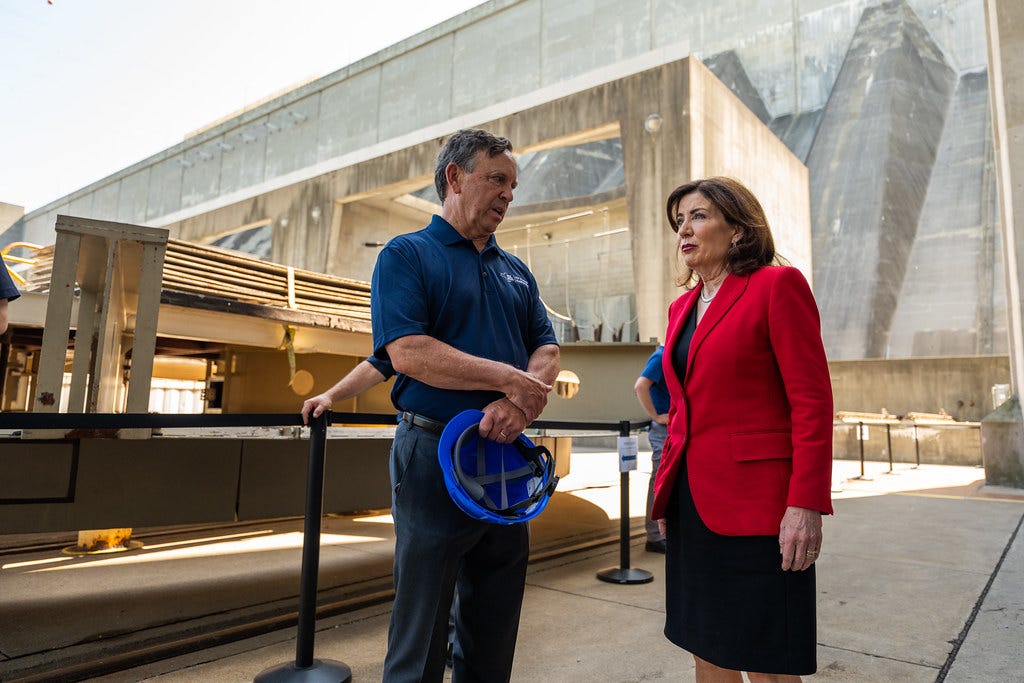
At the end of June, New York Gov. Kathy Hochul made an exciting announcement of new nuclear development in the state. Unlike other governors, she is directly appealing to state capacity — the New York Power Authority — to drive it. It's a big deal.
Back in July, Jacobin recently published my story on this news. I hope you read it, if you haven’t already. (I’ve been terribly slow to write up my published articles here.) Below I lay out some of the main ideas and then present some additional research and links on NYPA’s nuclear past.
My story on this massive nuclear news is framed in terms of Abundance by Ezra Klein &
. After all, the governor made overt references to the book and its arguments in making the case. A Hochul spokesperson tells me the idea is to use NYPA as "special forces" for state capacity.In the article I trace the history of New York’s energy priorities, from Gov. Nelson Rockefeller’s original solicitation of nuclear power in the mid 1960s, to the expansion of that nuclear development into the public sector with NYPA in the late ‘60s, to the turn away from nuclear and toward smaller, safer energy sources in 1975, to the electricity deregulation in the late ‘90s, to the past few decades of prioritizing renewables with competitive solicitation of independent power producers.
The key state agency for the current era of competitive renewables procurement has been the New York Energy Research and Development Authority, or NYSERDA. But Until 1975 it was the Atomic and Space Development Authority — an embodiment of the shift in state energy policy.
Another focus of the article concerns the usual labor unions vs. environmentalists pattern. Various labor unions have spoken in great detail about how much they support the Governor’s announcement.
Gesturing at the Niagara project behind him, [International President of the Utility Workers Union of America Jim Slevin] commended the NYPA pathway to new nuclear power “[for taking] the vision like they did decades ago. I applaud you for it, and I thank you for it, and labor stands behind you.”
Pat Guidice, the head of IBEW Local 1049 and of the New York State Utility Labor Council told me “the governor’s nuclear announcement is a big deal.” Moreover, he explained:
What’s exciting to me is that this isn’t NYPA stepping into an already crowded renewables space; it’s about taking the lead on something new and ambitious that doesn’t currently exist in New York. From a labor perspective, this feels like the right direction.
The state’s climate groups obviously aren’t on board with new nuclear. Last year they bragged about 153 of them saying no to new nuclear for New York. But what’s frustrating is even the Democratic Socialists of America-led coalition that helped to bring new energy into NYPA is opposed to the plan for new nuclear. Rather than stand with labor and realistic decarbonization, they have chosen the climate groups.
More on NYPA’s Nuclear Roots
In the article, as I did with my 2022 Jacobin feature on Indian Point, I also provide some juicy history of NYPA that’s not exactly easy to stumble upon otherwise. For instance, this chest-beating 1960 statement from then-Chairman Robert Moses (yes that Robert Moses) on the need for NYPA to go nuclear:
The control of atomic energy will, before long, be the greatest domestic policy question before the American people, because those who control fission and fusion will be the masters of population growth and location, industry, trade, commerce and life itself. This is too great a control to be exercised otherwise than on the theory that it is affected with a major public purpose not to be left exclusively to private profit enterprise.
That was quoted in the fascinating 1961 NYPA report titled simply “Atomic Power.” I highly recommend giving that one a read below.
Especially through today’s “abundance” lens, it’s clear that the forebears of liberalism were deeply concerned with how to produce key goods, how to attract industrial production for the sake of the economy, and the importance of just building. “We urge you [Gov. Rockfeller] therefore to reject the do-nothing recommendations” of a state commission that urged only private-sector development of nuclear (see below), the NYPA report declares, “and to support legislation which will permit the Power Authority to contribute to the development of nuclear power in New York.”
Gov. Rockefeller had kicked off interest in nuclear power in the state with an address on February 17th, 1959.
Rockefeller set up the Office of Atomic Development, which eventually became the Atomic and Space Development Authority. That office put forward its first report, “An Atomic Development Plan for the State of New York,” in December 1959:
The office’s plan the following year is the one Moses criticized in “Atomic Power”:
For some years after “Atomic Power,” NYPA and certain voices in the legislature argued publicly for the need for new public nuclear power. After Moses was Chairman James A. FitzPatrick, who picked up the mantle of championing public nuclear power.

In 1968 the legislature passed, and the governor signed, Senate Bill 5746, “an act to amend the public authorities law, in relation to the powers of the power authority of the state of New York and of New York state atomic and space development authority.” The law itself is attached below.
Some interesting tidbits in the text of the law:
As with Hochul’s contemporary plan, the law enabled NYPA “to supply low cost power and energy to high load factor, manufacturers which will build new facilities in the authority’s area of service.” The dependability of NYPA’s power supply, given fluctuating hydropower output, is a key reason given for the new capability.
The law also authorized NYPA to develop a new pumped storage hydro plant, which unlocked the ability for them to start construction on the Blenheim-Gilboa plant a short time later.
To operationalize the “yardstick” promise of public power, it urged NYPA to share operational data with private utilities in the New York Power Pool (the precursor to NYISO).
The law also authorized the Atomic and Space Development Authority “to participate in the construction and operation of nuclear facilities for the purpose of desalination or distribution of water.” In other words, to build nuclear-powered oceanwater desalination plants — something Matt Huber and I have also written about.
After the legislature enabled NYPA to enter the nuclear space, it immediately go to work.
Within seven months, NYPA submitted the application to build its first plant, the James A. FitzPatrick Nuclear Power Plant, named for Moses’s successor, to the federal Atomic Energy Commission, and construction started in 1970 once that approval was secured. NYPA lowered the cost of the plant by taking over core components that were in contract from a private utility and by locating it next to that utility’s just-finished plant. Because of that association, Chairman James FitzPatrick had to assure the public during its construction that, once built, it would be owned and operated solely by NYPA. The plant came online in 1975, and it’s still running today, half a century later; it’s one of three in New York.
An interesting tidbit I learned in the research for the article is the involvement of investor-owned utility Niagara Mohawk in the development of the FitzPatrick plant. FitzPatrick isn’t just located near the two-unit Nine Mile Point; it was developed alongside the then-one-unit Nine Mile Point with direct assistance from then-owner Niagara Mohawk. Beyond the aforementioned acquisition of core components and shared facilities, Niagara Mohawk employees even operated the FitzPatrick plant for its first year of operations. Only after that first year did NYPA take over, in 1976.
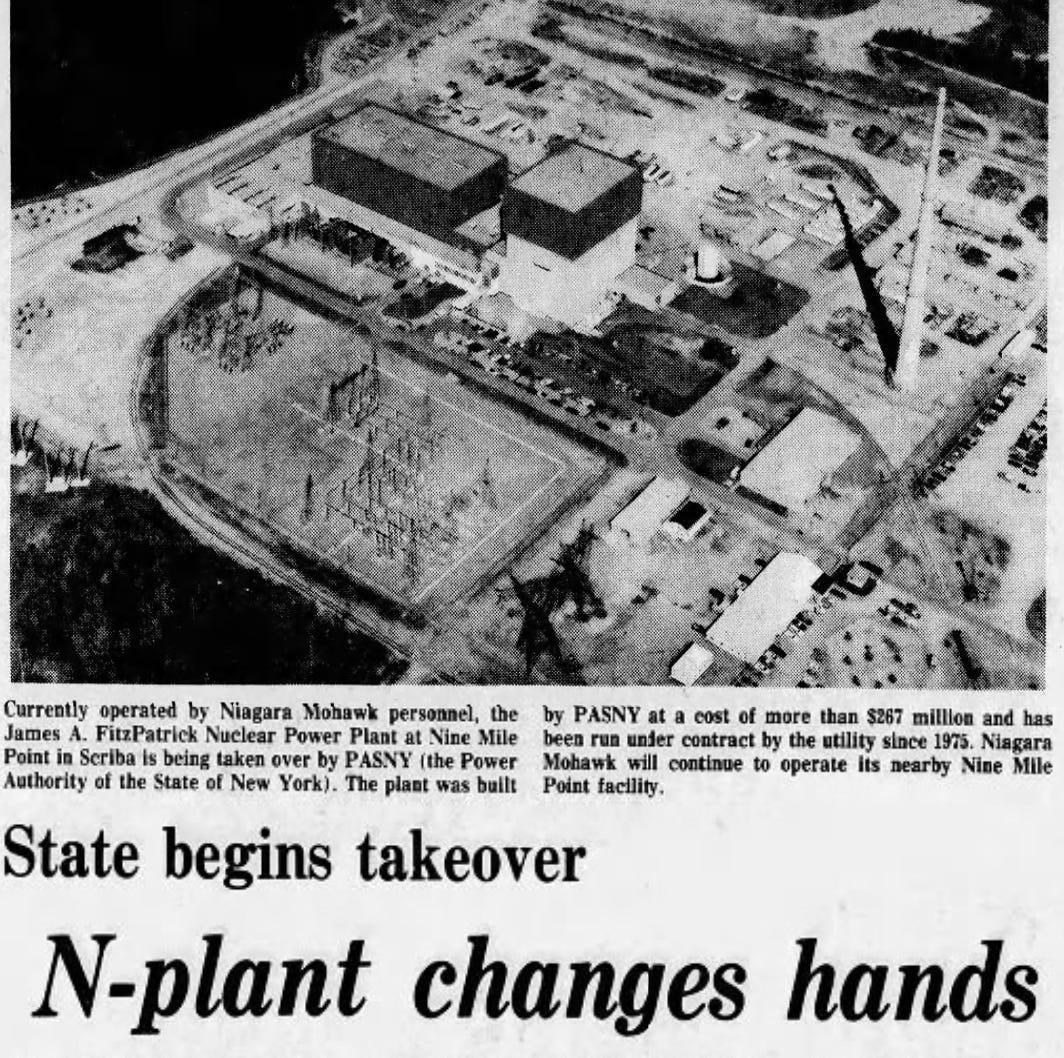
One thing I was surprised not to find any evidence of was a retrospective look at the completed FitzPatrick plant by Robert Moses. Not a single quote from or interview with Moses that discussed his achievement of pushing NYPA into atomic power. Robert Caro’s meticulous critique of him, The Power Broker, came out in 1974 and won the Pulitzer in 1975, the year FitzPatrick first came online. Perhaps there just wasn’t public interest in any of positive achievements before Moses died in 1981.
In the months to come I’m sure there’ll be a lot more news on the NYPA-led nuclear project. Subscribe to Public Power Review to stay in touch with any updates.


